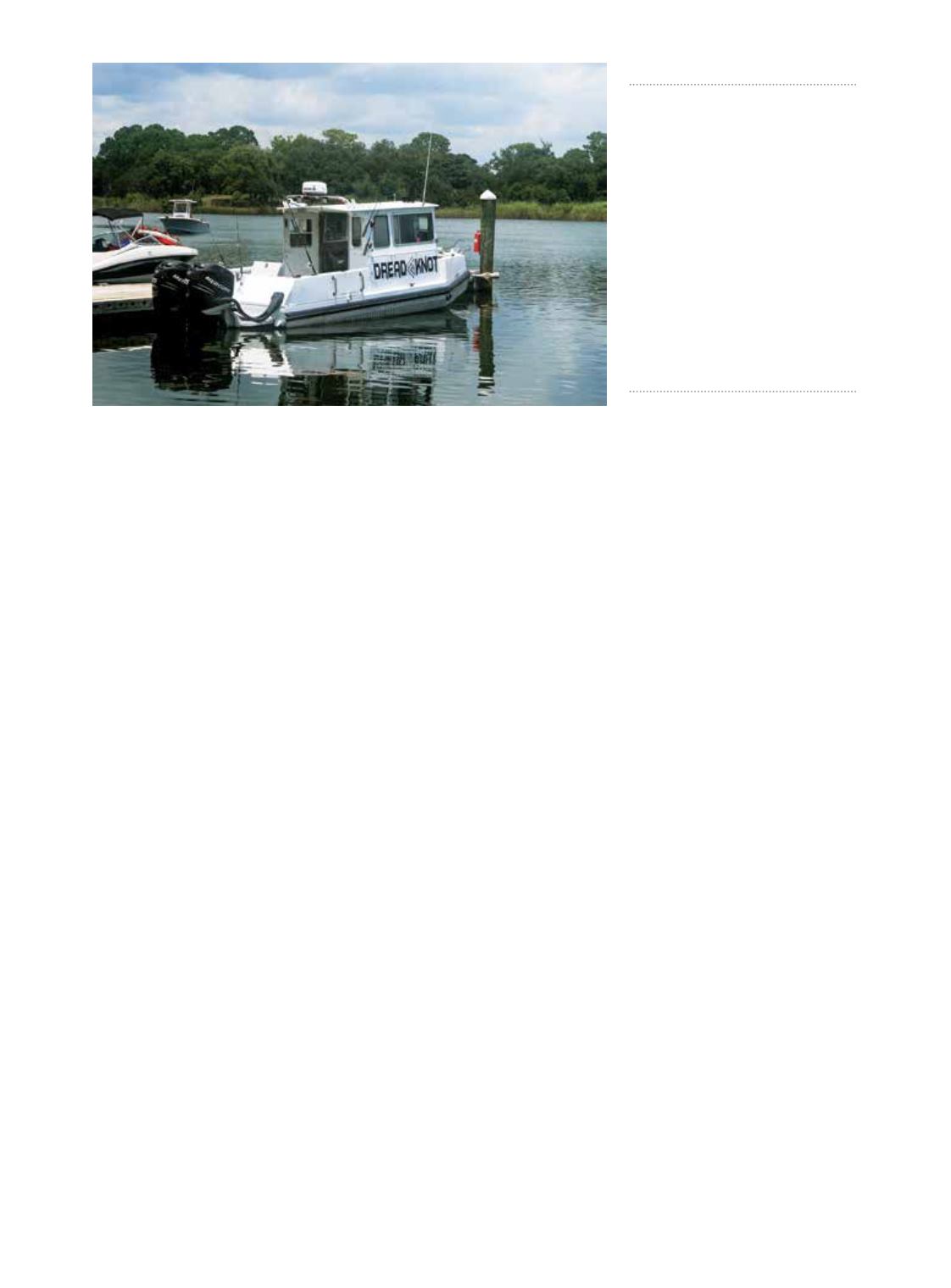

Livingston knew the distressed diver needed pure
oxygen as soon as possible.
“I got on the radio and asked the crew of the other
vessel if they were prepared to deal with this type
emergency, and they said they did not have oxygen on
board,” he reported. “So I radioed that I did and would
be right there.”
In no time, the
DreadKnot
pulled up alongside the
other boat, where its crew of three had positioned
the diver in an open space on the deck atop some life
jackets for cushioning.
“I hopped on the boat first, and I recognized the
injured diver,” Livingston said. He knew the man as an
avid local diver in his 50s with 20 years of experience
and more than 300 dives.
Because he had prior knowledge of the man’s
demeanor, Livingston was better able to assess his
condition. “He was out of it, lethargic,” Livingston said.
“He is normally very talkative, but he was very quiet
and worried. I was told that he had spit up some blood,
but I didn’t see that with my own eyes. When I saw
him he really didn’t look that bad, but he was definitely
lethargic and wasn’t talking much.”
As Livingston began to administer oxygen, he asked
the diver what happened.
It was the group’s third dive of the day. They too
were spearfishing. Near the end of the dive, the
diver got entangled in the wreck when he shot a fish.
The paddleboat lies 111 feet below the surface, and
Livingston learned that the accident happened close to
the time the diver intended to start his ascent.
“He got entangled and ran out of air,” Livingston said,
“and the only way he figured he could free himself was
to take off his gear, leave it at the bottom and swim to
the top.”
Once the diver began breathing oxygen, the next
step was to get him safely to shore so he could be
given a proper medical evaluation. The boat was in
communication with the local Coast Guard station,
which was planning to send a boat to retrieve the diver.
“The Coast Guard was going to send a cutter to meet
us halfway, so we got under way, but I mentioned to
them that it would probably be better to move him to
my boat because it was faster,” Livingston explained.
The
DreadKnot
is an aluminum-chambered boat
designed for harbor patrols and Coast Guard operations,
so while the recreational dive boat could cruise along
at 20 knots, once they moved to Livingston’s boat they
would be able to increase the speed to 45 knots.
“We doubled our speed,” he said, adding that during
the transition the weather had begun to change. “It was
getting rough with two- to three-foot seas, and the rain
was coming down.”
As the
DreadKnot
approached East Pass, leading into
Destin, the Coast Guard met them as an escort.
“We fell in behind the cutter under the bridge and then
turned to go to the Coast Guard station,” Livingston said.
Once on land, the group was met by the Coast
Guard, the police and an ambulance. The injured diver
was taken to a local hospital to be assessed and was
released the same day with no lasting health problems.
As for Livingston, he said his takeaway from the
ordeal is to always be prepared.
“The Coast Guard doesn’t always carry oxygen on
their boats; that’s one thing I learned from this,” he
said. “There is always an element of risk in diving, and
not having oxygen available for emergencies amounts
to an additional hazard.”
Today Livingston carries two oxygen units aboard
the
DreadKnot
and has added a defibrillator as well. He
said he has no regrets about having to cancel his fishing
trip that day, and he chose to refund his clients, all of
whom were grateful for the positive outcome.
“We were happy we were in the right place at the
right time,” Livingston said. “And we were blessed with
great fishing in the days that followed.”
AD
ALERTDIVER.COM|
63
“There is always
an element of
risk in diving,
and not having
oxygen available
for emergencies
amounts to an
additional hazard.”
SAVANNAH VASQUEZ
















